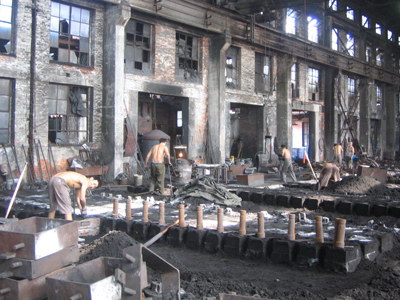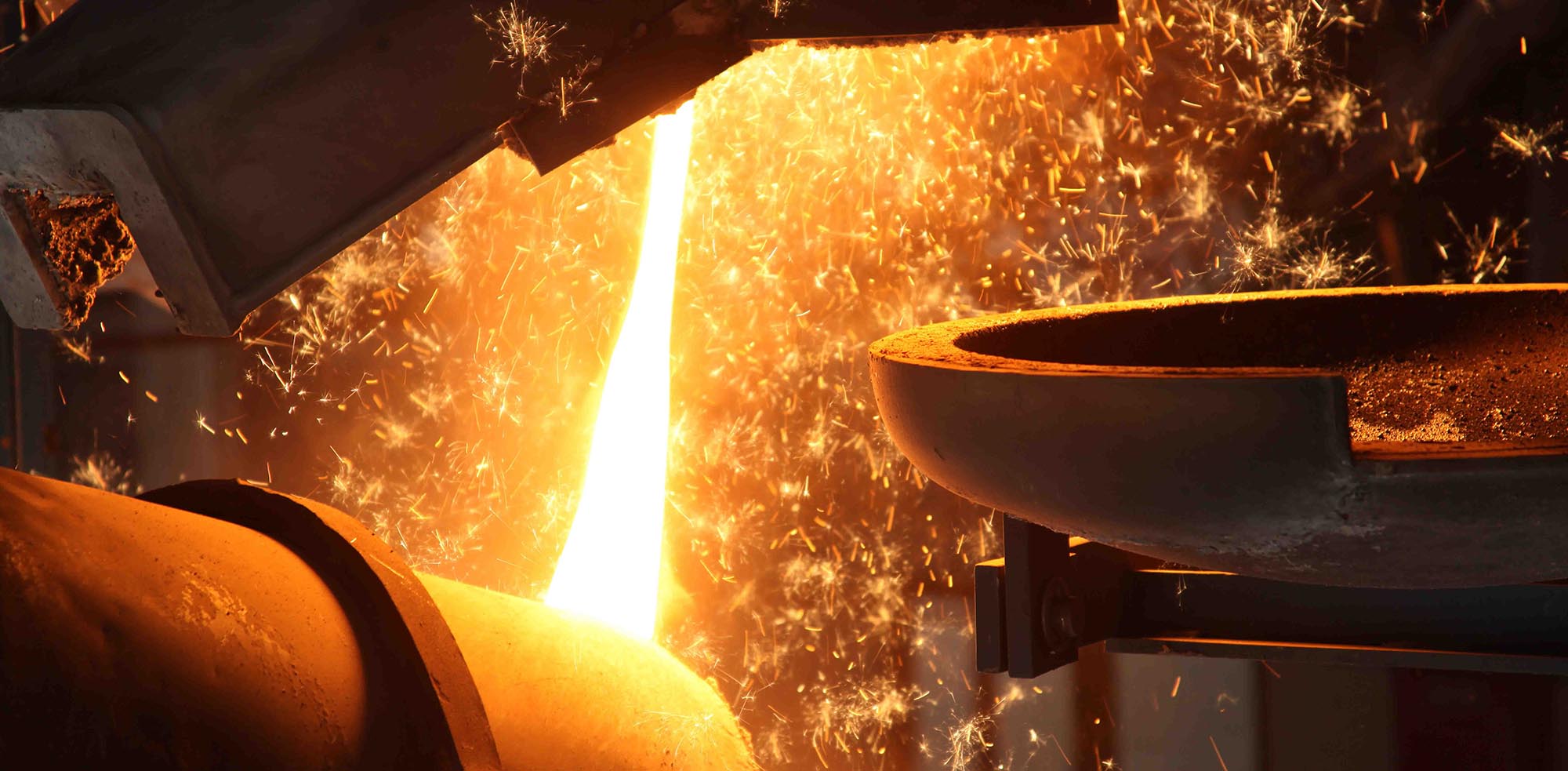Discover the Cutting-edge Methods Made Use Of in a Metal Foundry for Superior Casting Results
In today's affordable production landscape, metal foundries are significantly adopting innovative techniques to enhance casting outcomes - Aluminum Foundry. Advanced computer system simulations allow for precise modeling of liquified metal behavior, while 3D printing enables quick production of complex molds. Furthermore, green products and automation enhance procedures. These advancements guarantee considerable enhancements in effectiveness and high quality control. The impact of these innovations on sustainability and production techniques stays to be totally checked out.
Advanced Computer Simulations in Metal Casting
Advanced computer system simulations have actually reinvented the metal casting procedure by boosting accuracy and efficiency. These advanced tools enable engineers to create digital models of actors elements, enabling them to forecast the actions and analyze of molten metal throughout the casting stage. By simulating numerous specifications such as temperature, flow price, and air conditioning rates, manufacturers can identify potential flaws before physical manufacturing begins.
This proactive strategy minimizes waste and decreases expensive mistakes, ultimately causing boosted item quality. Furthermore, simulations promote the optimization of mold layouts, guaranteeing that they meet the specific needs of each project. The integration of computational liquid characteristics (CFD) and limited element analysis (FEA) additional contributes to the precision of these simulations, offering understandings that were previously unattainable. As an outcome, progressed computer system simulations have actually become an indispensable component of modern-day metal foundries, considerably advancing the market's capabilities.
3D Printing for Mold And Mildews and Patterns
3D printing has actually emerged as a groundbreaking method for creating mold and mildews and patterns in the metal foundry sector. This modern technology makes it possible for the fast manufacturing of complicated geometries that traditional production approaches have a hard time to accomplish. By utilizing additive manufacturing, foundries can develop intricate styles with lowered lead times and material waste. The capacity to generate mold and mildews on demand permits greater versatility in layout iterations, assisting in faster prototyping and modifications.
Additionally, 3D printing can utilize a range of products, consisting of plastics and metals, tailored to certain casting needs. This adaptability enhances the precision of molds, leading to superior casting outcomes with improved surface finishes. Furthermore, the decrease in the number of parts required simplifies setting up procedures, additionally optimizing production performance. As foundries continue to take on 3D printing, they are poised to redefine sector requirements, paving the means for technology and improved productivity in metal casting operations.
Eco-Friendly Products and Processes
As the metal foundry market deals with boosting pressure to decrease its ecological impact, the adoption of eco-friendly products and procedures has come to be crucial. Shops are currently discovering sustainable alternatives to traditional materials, such as making use of bio-based binders and recycled steels. These materials not only minimize waste yet likewise reduced power usage during manufacturing.
In addition, improvements in sand spreading methods have resulted in making use of artificial sands that are less harmful to the atmosphere. Foundries are additionally implementing innovative procedures like molten metal therapy that minimizes emissions and boosts the top quality of cast items.
Additionally, water-based finishings have actually changed toxic solvents, promoting a more secure work setting (Aluminum Foundry). By incorporating these environment-friendly practices, metal foundries can substantially reduce their eco-friendly effect while keeping top quality spreading outcomes. This change not only profits the atmosphere but also aligns with the expanding customer demand for sustainable production solutions
Automation and Robotics in Foundry Procedures
While the metal foundry sector welcomes innovation, the assimilation of automation and robotics is transforming operations greatly. Automated systems improve processes such as mold production, metal putting, and casting completing, significantly enhancing efficiency. Robotics facilitate the handling of hefty products, decreasing the risk of office injuries and guaranteeing safer settings.

Even more, using automated directed vehicles (AGVs) optimizes material transportation within facilities, making certain prompt distribution of elements to appropriate workstations. By implementing these modern technologies, foundries can adapt to fluctuating demands with better dexterity, ultimately causing boosted success and competition in the market. As automation and robotics proceed to evolve, they hold the possible to redefine conventional foundry practices and drive additional developments in casting techniques.
Real-Time Monitoring and Quality Assurance Techniques
The advancements in automation and robotics have paved the method for more innovative techniques to quality control in metal foundries. Real-time monitoring systems make use of sophisticated sensors and information analytics to track essential parameters throughout the casting process. These systems continually assess variables such as pressure, product, and temperature composition, allowing prompt detection of inconsistencies from developed requirements.
Quality assurance techniques now integrate artificial intelligence formulas that evaluate historical data to forecast possible issues before they take place. This proactive strategy minimizes waste and improves general production effectiveness. In addition, incorporated responses loopholes permit rapid adjustments, guaranteeing that each spreading satisfies stringent top quality requirements.
The application of special info digital doubles-- virtual reproductions of physical possessions-- has additionally reinvented quality control, permitting designers to simulate and optimize procedures in real-time. With each other, these cutting-edge methods substantially boost the dependability and top quality of spreadings, setting new industry criteria in metal foundry procedures.
Frequently Asked Inquiries
What Kinds of Metals Are Typically Cast in Foundries?
Typically cast metals in foundries include aluminum, iron, bronze, and brass. Each metal displays special homes, making them appropriate for various applications, such as auto parts, machinery, and creative sculptures, enhancing their convenience in production.

How much time Does the Casting Refine Usually Take?
The spreading process normally takes a number of hours to days, relying on elements such as the intricacy of the mold and mildew, type of metal used, and air conditioning demands. Each stage influences the general period noticeably.
What Safety and security Steps Remain In Area for Foundry Workers?

How Are Defects in Castings Identified and Addressed?
Flaws in spreadings are identified through visual evaluations and non-destructive screening techniques. When identified, foundry employees address them by fine-tuning processes, adjusting product structures, and carrying out restorative steps to guarantee top quality and conformity with requirements.
What Is the Cost Array for Metal Casting Solutions?
The expense range for metal spreading solutions typically varies in between $1 to $10 per pound, depending on variables such as product type, complexity of the style, and production quantity, affecting overall rates considerably.
In today's affordable production landscape, metal foundries are significantly taking on cutting-edge techniques to improve casting results. As the metal foundry market encounters raising pressure to lower its ecological footprint, the adoption of green products and processes has become important. Shops are now discovering sustainable choices to conventional products, such as utilizing bio-based binders and recycled metals. By incorporating these eco-friendly methods, metal foundries can considerably decrease their eco-friendly impact while preserving top quality spreading outcomes. The developments in automation and robotics have actually paved the means for much more advanced approaches to high quality guarantee in metal foundries.